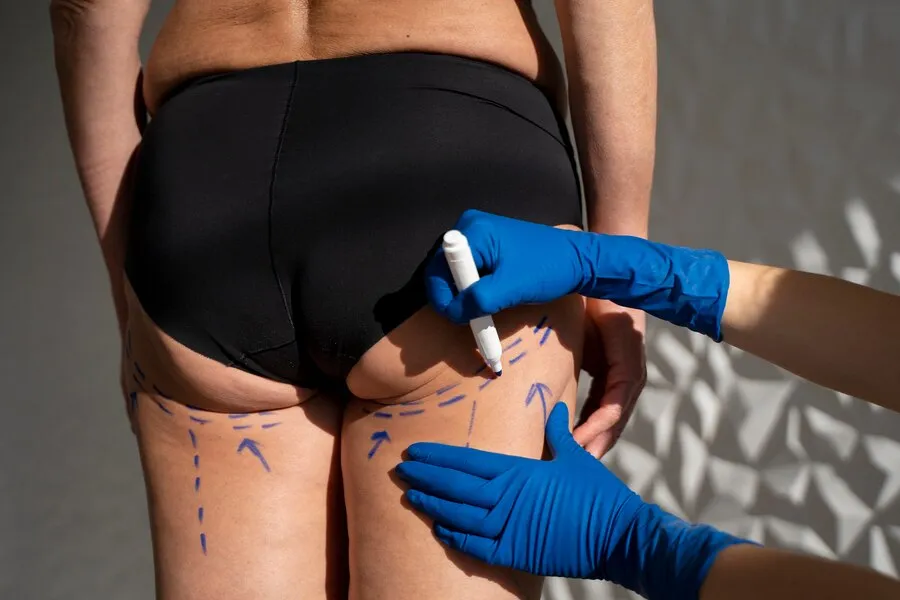
The term ‘Ozempic butt’ has recently entered health and wellness conversations as more people are prescribed the drug; Ozempic (semaglutide), a medication primarily used to manage type 2 diabetes and aid in weight loss. While effective in weight management, Ozempic can sometimes lead to noticeable changes in body composition, especially in areas like the buttocks.
Table of Content:-
According to our expert, Dr Shrey Kumar Srivastav, Senior Consultant and Physician - Sharda Hospital, “This effect is the result of a loss in subcutaneous fat, which can give the appearance of a flattened or sagging buttocks—a phenomenon popularly referred to as “Ozempic butt’.”. Here’s a closer look at this side effect, why it happens, and expert-approved strategies for managing it.
What Causes Ozempic Butt?
Ozempic works by targeting hormones that affect blood sugar and hunger, helping to curb appetite and ultimately assist with weight loss. While effective in promoting fat loss, Ozempic doesn’t discriminate between areas where fat is reduced. Stating an example, Dr Srivastav said, “For some people, this can mean a reduction in subcutaneous fat in the buttocks, leading to a flattened or deflated appearance, particularly in those experiencing significant weight loss.”
This side effect can be more pronounced in individuals who naturally have less muscle mass or body fat, as the loss of fat leaves less volume in areas like the buttocks. While this change isn’t harmful, it can be cosmetically undesirable for some and may impact self-confidence. Thankfully, there are ways to counteract or reduce the visual effects of Ozempic butt, revealed Dr Srivastav.

Also Read: FDA Issues New Warning For Popular Weight Loss Drugs—Here's What You Need To Know
Tips For Managing Ozempic Butt
1. Maintain a Balanced Diet with Enough Protein
To help manage the side effects of Ozempic on body composition, nutrition plays a key role. Adequate protein intake supports muscle maintenance, which is essential for filling out areas that might otherwise appear flatter due to fat loss. Protein-rich foods, such as lean meats, fish, eggs, legumes, and tofu, help preserve muscle mass while aiding in weight loss. A healthcare provider or nutritionist can help determine the right amount of protein based on your body type and goals.
2. Incorporate Strength Training Into Your Routine
Regular strength training can help build and maintain muscle in the buttocks and surrounding areas, giving a fuller, more toned appearance. Exercises that target the glute muscles, such as squats, lunges, deadlifts, and bridges, can help strengthen and shape the buttocks. These exercises work to counterbalance the loss of subcutaneous fat by building underlying muscle tissue. For best results, aim to incorporate these movements into your exercise routine at least two to three times a week.

Also Read: Instagram Leads or Misleads: Can Coconut Actually Help with Weight Loss? Expert Debunks Myth
3. Stay Hydrated and Support Skin Health
Hydration is important for maintaining skin elasticity, which can improve the appearance of sagging or loose skin. Drinking adequate water and consuming foods rich in antioxidants, like berries, leafy greens, and nuts, can support skin health. Consider incorporating collagen supplements or foods high in vitamin C to further support collagen production, which may help the skin maintain its elasticity during weight loss.
4. Consult With Your Healthcare Provider
If the aesthetic changes due to Ozempic are causing significant concern, speak to your healthcare provider. They may suggest adjusting your dosage or exploring alternative medications or treatments. Additionally, setting realistic weight-loss goals with your provider can help manage body composition changes more comfortably and sustainably.
Bottomline
While ‘Ozempic butt’ can be an unwelcome side effect for some, it is a manageable one. Through a combination of balanced nutrition, targeted strength training, and support from healthcare providers, it’s possible to counteract this side effect and maintain a healthy, toned appearance. Always consult your healthcare provider before making significant changes to your exercise or nutrition routine, and remember that a balanced approach to weight loss can help you achieve results that are both satisfying and sustainable.
Also watch this video
How we keep this article up to date:
We work with experts and keep a close eye on the latest in health and wellness. Whenever there is a new research or helpful information, we update our articles with accurate and useful advice.
Current Version